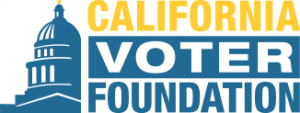
Last week, the IPAT Clinic helped the California Voter Foundation submit a letter to California Secretary of State Alex Padilla commenting on his office’s proposed regulations regarding risk-limiting audits. Kim Alexander, CVF’s President, submitted the comments and joining her on the comments were Jack Lerner, a member of the CVF Board of Directors (and Director of the IPAT Clinic), Pamela Smith and Mark Lindeman of Verified Voting, Philip Stark, Professor of Statistics at University of California—Berkeley, and Kammi Foote, Clerk-Recorder and Registrar of Voters in Inyo County. IPAT Certified Law Students Hannah Green and Prachi Mistry participated in developing the comments.
For the past year, students in the IPAT Clinic have been working with the California Voter Foundation to study risk-limiting audits, or RLAs. In an RLA, elections officials manually tally a portion of the paper ballot records and then use statistical analysis to determine the chance that there was an error in the original vote tally. Beginning next year, counties in California will for the first time be permitted to conduct RLAs in place of an older auditing procedure, the “one percent manual tally,” in which one percent of a county’s precincts are randomly selected and the ballots in those precincts are manually tallied.
This October, the California Secretary of State issued draft regulations providing guidance to counties implementing RLAs, and the IPAT Clinic helped the California Voter Foundation draft comments on those regulations. The comments thanked Secretary Padilla for developing these regulations and for the amount of work his office has put into developing them, and applauded the inclusion of many specific provisions that will ensure a secure, transparent, and reliable post-election audit process. The letter also recommended four important changes to the regulations:
- First, the regulations should specify that if an elections official chooses not to conduct RLAs for each and every contest in their jurisdiction, they must continue to conduct the one-percent manual tally. When counties conduct a risk-limiting audit in place of the one percent manual tally, California law requires that they must do so for each and every contest. The language of the proposed regulations, however, only requires that counties conduct RLAs for as few as three contests, and establishes an entirely new auditing procedure for other contests not found in the statute. Though the authors of the letter recognized that it would be difficult to do an RLA for every contest in a county, they wrote, that’s what the law says. They recommended that the Secretary clarify that if an elections official chooses not to conduct RLAs for each and every contest in their jurisdiction, they must continue to conduct the one-percent manual tally and conduct pilot RLAs in addition to the 1PMT.
- Second, the final regulations should require the Secretary to disclose the source code of the RLA software tool. The software used to conduct the RLA (here’s an example) contains all the formulas and calculations used to determine how many ballots to count and when the audit has sufficiently narrowed down the risk of an error in the reported outcome of the contest. Given the nature of the job this tool is built to perform, it is necessary for the public to be able to inspect and verify the tool’s software and ensure the legitimacy of the audit process, and it is already the prevailing practice in the field.
- Third, the Secretary should ensure in the regulations that cast vote records be made publicly available online sufficient to allow the public to verify that the RLA is being conducted appropriately. Cast vote records, or CVRs are essentially the digital record of the vote generated by the voting system, and it is what elections officials compare paper ballots against when they do the manual tally. CVRs often can be as simple as a spreadsheet, but they must be encrypted or redacted to remove any personally-identifiable information before being put online. The authors of the letter believe it is important to post the cast vote records online so that voters may verify the results of the audit and consequently the results of the election. Although the current regulations require a subset of the cast vote records to be published online, without the full data set there is no way for the public to independently verify the audit or the election outcome.
- Finally, the Secretary should clarify how “partial RLAs” will work. In California, many contests cross county lines, such as statewide ballot initiatives and some Congressional races; in such contests, two or more different election systems count a portion of the votes. California law anticipates “partial RLAs” for such cross-jurisdictional contests—but it doesn’t fully describe the process by which a county should conduct a partial RLA. More importantly, a partial RLA conducted in only some of the counties involved is not equivalent to a full RLA. In order for an RLA to work, all the votes cast in the contest must be accounted for; the proposed regulations do not provide for this.
“We understand and appreciate the extensive effort involved in developing these proposed regulations,” the authors wrote, “and they offer valuable guidelines on how California counties should conduct risk-limiting audits. We do, however, strongly urge further clarification to ensure that the regulations do not expressly contradict existing law and to allow for greater transparency so that the public can ensure that RLAs are implemented as designed.”
Read the comments here.